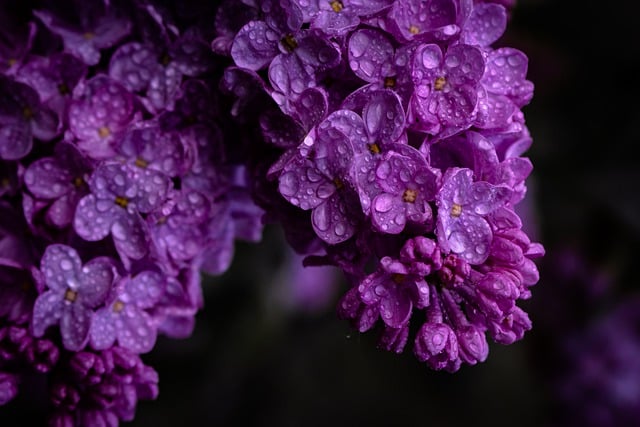Introduction to Lilacs
Embark on a delightful gardening journey with Lilacs, beloved for their vibrant blooms and sweet fragrance. This guide will walk you through every aspect of selecting, planting, and caring for these enchanting shrubs, providing you with the knowledge to enjoy their beauty and benefits.
Botanical Overview
Learn the basics about Lilacs to understand their needs and characteristics:
- Common Name: Lilac
- Scientific Name: Syringa vulgaris
- Family: Oleaceae
- Native Region: Balkan Peninsula
- Lilacs are celebrated for their colorful late-spring blooms and are available in a range of colors and varieties suitable for many gardens.
Origin, History, and Medicinal Use
Explore the rich cultural and medicinal background of Lilacs:
- Origin: Native to Southeastern Europe with a storied history in folk traditions.
- Cultural Significance: Symbol of first love and youthful innocence in Victorian flower language.
- Medicinal Uses: Historically used for reducing fevers and its anti-inflammatory properties.
- Lilacs have been used in traditional medicine and are appreciated for their potential health benefits and aromatic qualities.
Varieties of Lilac
Discover the popular varieties that might suit your garden’s style and climate:
- Common Lilac (Syringa vulgaris): Celebrated for its robust growth and fragrant purple flowers.
- Dwarf Korean Lilac (Syringa meyeri ‘Palibin’): Perfect for smaller spaces with a compact form.
- French Hybrid Lilacs: Known for their double flowers and extended bloom time.
- Japanese Tree Lilac (Syringa reticulata): Offers tree-like growth with creamy white flowers.
- Each variety brings its unique charm, enabling gardeners to choose based on size, color, and fragrance.
Planting and Growth Conditions
Setting up your Lilacs for success starts with understanding their preferred environment:
- Sunlight: Full sun is ideal.
- Soil: Well-draining, fertile, slightly alkaline.
- Planting Best Practices: Plant in the fall or early spring to ensure root establishment.
- Growing Zones: Thrives in USDA Zones 3 to 7, requiring a chilling period to bloom optimally.
Care and Maintenance
Keeping your Lilacs thriving involves regular care:
- Watering: Essential for young plants, but established shrubs are relatively drought-tolerant.
- Fertilizing: A light application of compost or balanced fertilizer in early spring encourages growth.
- Pruning: Annual pruning after blooming helps maintain shape and promotes vigorous flowering for the next season.
Benefits and Uses
Lilacs are more than just pretty flowers:
- Aesthetic Appeal: They enhance garden landscapes with their stunning blooms and lush foliage.
- Wildlife Attraction: Attract butterflies and bees, supporting local ecosystems.
- Cut Flowers: Excellent for bouquets with their strong scent and beautiful colors.
Potential Problems
Even hardy plants like Lilacs can encounter issues:
- Pests and Diseases: Watch out for powdery mildew and lilac borers.
- Environmental Stress: Requires well-drained soil to avoid root rot.
- Proactive monitoring and regular maintenance can prevent most problems and keep your Lilacs healthy.
Conclusion
Lilacs can transform any garden with their spectacular springtime displays and sweet perfume. With proper care and suitable conditions, these historic and beloved plants will thrive, bringing joy and beauty to your outdoor space season after season. Embrace the timeless elegance of Lilacs and enjoy the myriad benefits they bring to your garden.
Recent Posts

The Power of Mounding: An Essential Gardening Technique for Healthy Plants

The Ultimate Guide to Philodendron Birkin – Care, Tips, and Benefits

Watering Plants – Indoor Edition

The Advantages of Built-Up Garden Beds: A Gardener’s Best Friend

The Secret Weapon for Lush Blooms: How to Create the Perfect Fertilizer Schedule












You must be logged in to post a comment.